iptables 简介
iptables 是一个用户空间实用程序,它允许系统管理员配置 Linux 内核防火墙的IP 数据包过滤规则,这些规则以不同的 Netfilter 模块实现。过滤器组织在一组表中,其中包含如何处理网络流量数据包的规则链。目前,不同的内核模块和程序用于不同的协议;iptables 适用于 IPv4,ip6tables 适用于 IPv6,arptables 适用于 ARP,ebtables 适用于以太网帧。
iptables 需要提升权限才能运行,并且必须由root用户执行(sudo && sudo -i),否则无法正常运行。
man 命令查看使用手册
man iptables:查看 iptables 使用手册。man ip6tables:查看 ip6tables 使用手册。man arptables:查看 arptables 使用手册。man ebtables:查看 ebtables 使用手册。
iptables DESCRIPTION
1 | Iptables and ip6tables are used to set up, maintain, and inspect the tables of |
iptables [options -L] 列出所有的 IPv4 防火墙规则
1 | -L, --list [chain] |

Options: -v
1 | -v, --verbose |
Options: -n --numeric
1 | -n, --numeric |
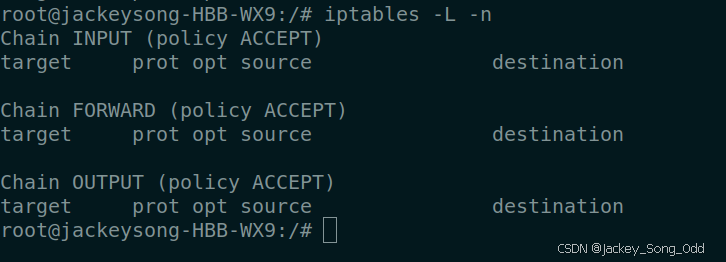
iptables 配置防火墙规则 [允许/禁止] 被其他主机 ping 到
iptables 默认允许主机被其他机器 ping 到(即允许 ICMP echo 请求和回显应答)。如果你的机器是一台 Linux 云服务器,除了 Linux 系统内的防火墙规则正确配置以外,还要正确配置云服务器提供商的控制台界面的防火墙规则,如下:(放行 IPv4 ICMP 流量)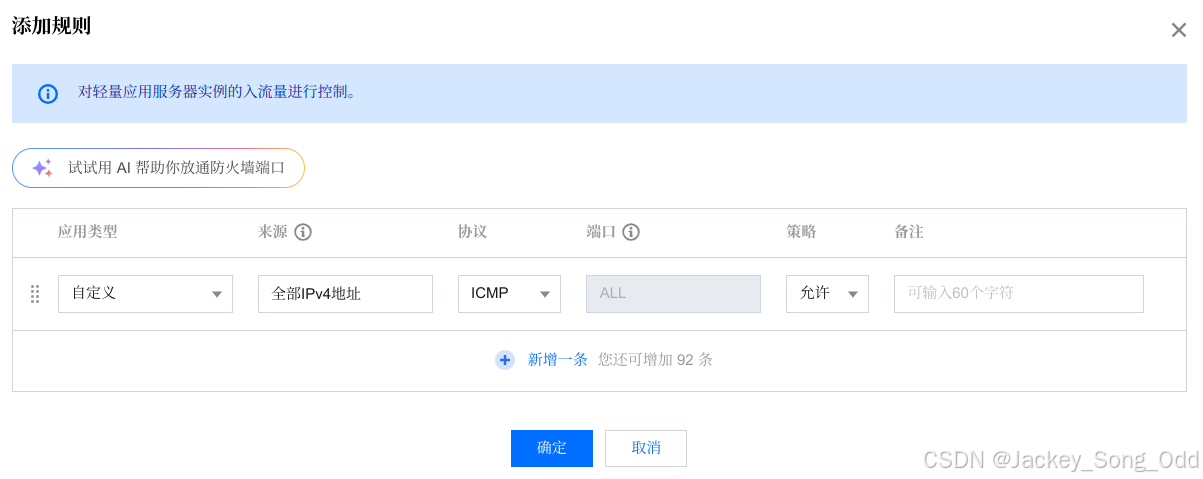
允许被 ping 到: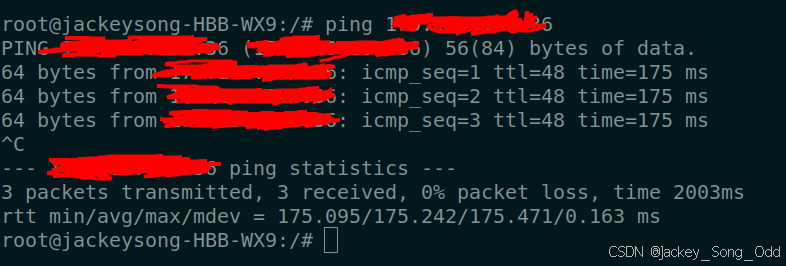
iptables 禁止 ICMP echo
命令 iptables -A INPUT -p icmp --icmp-type echo-request -j DROP 执行该命令后,即使云服务器提供商的控制台界面放行 ICMP,但是由于 Linux 系统中的防火墙规则中丢弃了 ICMP echo,这仍然会导致服务器无法被 ping 到。如果你的Linux机器在云服务器环境下,通常有两层防火墙,一层是云服务器提供商的控制台界面的防火墙,一层是 Linux 系统内的防火墙,两侧防火墙都正确配置,才能放行指定流量。
执行了以上命令以后,防火墙规则中多出了一条 icmp 类型的规则: 291 8448 DROP 1 -- * * 0.0.0.0/0 0.0.0.0/0 icmptype 8,DROP 意思是丢弃。在这条规则上面,我也配置了 TCP 8080/443/12000/80 ACCEPT 等规则。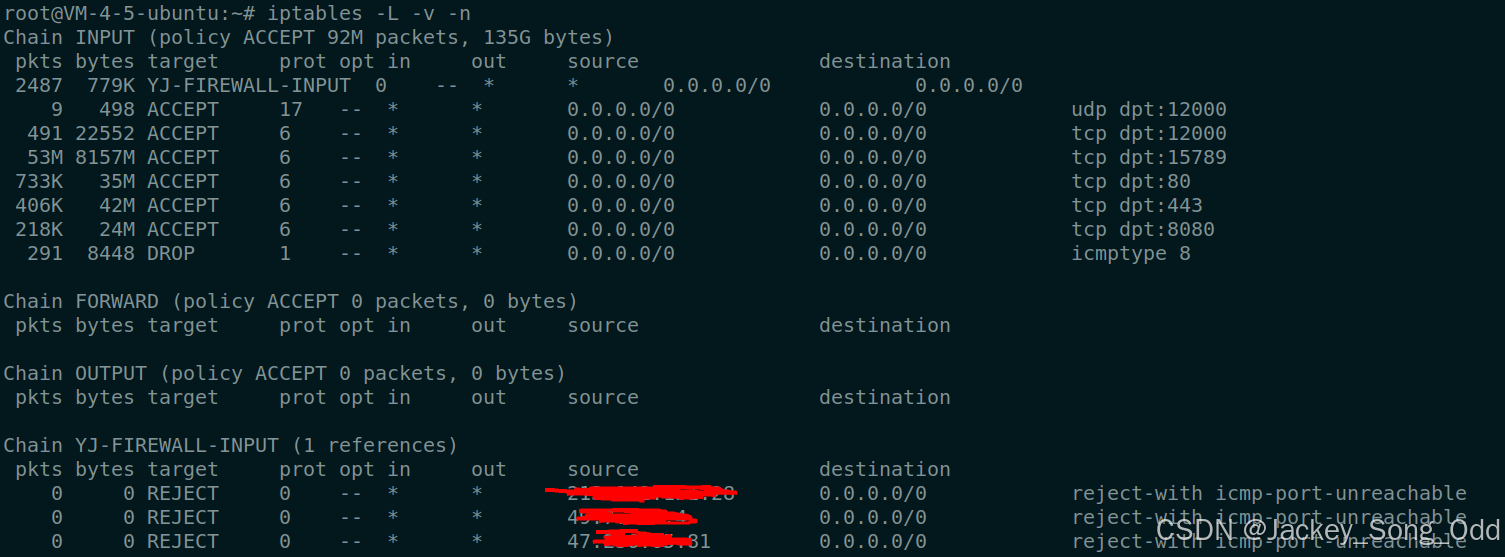
允许 ICMP echo:iptables -D INPUT -p icmp --icmp-type 8 -j DROP :
-D:这个选项表示要删除(Delete)一条规则。INPUT:指定要删除规则所在的链。INPUT 链用于处理进入本机的数据包。-p icmp:指定要匹配的协议类型。在这个例子中,-p icmp 表示匹配 ICMP(Internet Control Message Protocol,互联网控制消息协议)数据包。ICMP 通常用于发送错误消息、操作消息等,比如 ping 命令就使用 ICMP echo 请求和回复。--icmp-type 8:进一步指定要匹配的 ICMP 数据包类型。在这个例子中,8 是 ICMP echo 请求的类型码。这意味着这条规则之前是用来匹配并处理 ICMP echo 请求(即 ping 请求)的。-j DROP:指定匹配到规则的数据包应该采取的动作。DROP 表示丢弃数据包,不给出任何回应。
iptables -D INPUT -p icmp --icmp-type 8 -j DROP 这条命令的意思是:从 INPUT 链中删除一条规则,该规则之前用于丢弃所有 ICMP echo 请求(即 ping 请求)数据包。
命令执行后: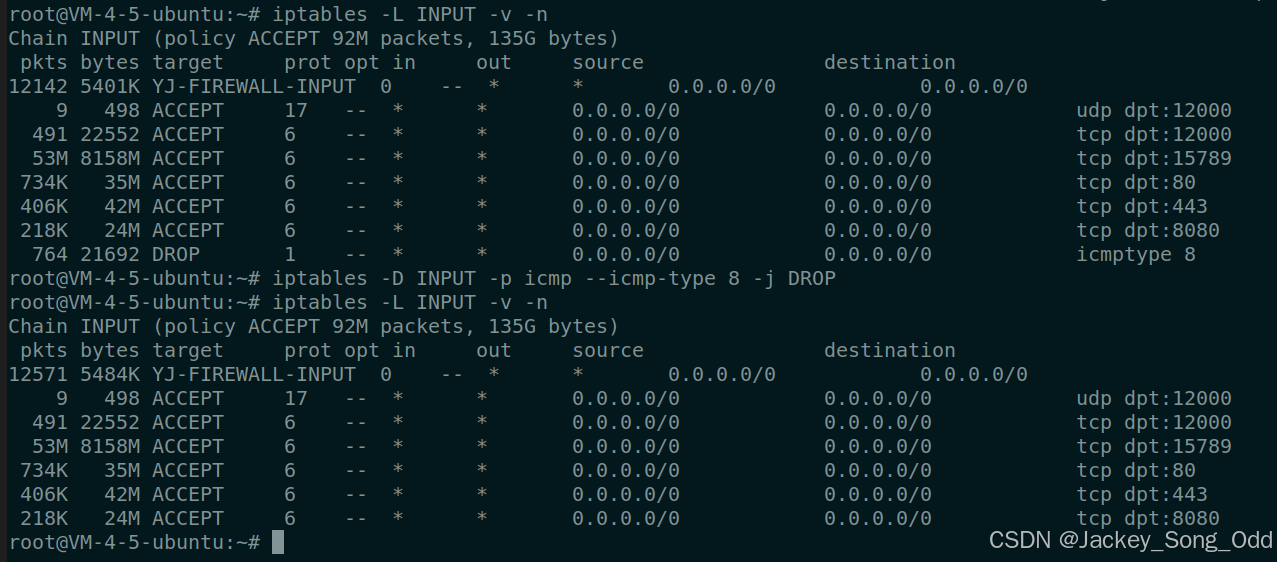
为了节省网络带宽,并提高安全性,我个人比较喜欢禁止 ICMP 流量。
iptables 放行一个指定的端口
比如放行 16888 端口的 TCP 流量:iptables -A INPUT -p tcp --dport 16888 -j ACCEPT
1 | -A, --append chain rule-specification |
-A INPUT:-A 选项表示添加(Append)一条规则到指定的链中。在这个例子中,INPUT 是链的名称,它用于处理进入本机的数据包。-p tcp:-p选项指定了要匹配的协议类型。在这个例子中,-p tcp表示匹配 TCP(Transmission Control Protocol,传输控制协议)数据包。--dport 16888:--dport选项指定了目的端口(Destination Port)的号码。在这个例子中,16888 是要匹配的 TCP 目的端口号。-j ACCEPT:-j选项指定了匹配到规则的数据包应该采取的动作。ACCEPT 表示接受数据包,允许它继续通过防火墙进入本机。
1 | -j, --jump target |
1 | TARGETS |
target 有 ACCEPT / DROP / RETURN / REJECT … …
- REJECT:拒绝数据包,并向发送方发送一个错误响应。与 DROP 不同,REJECT 会让发送方知道数据包被拒绝了。
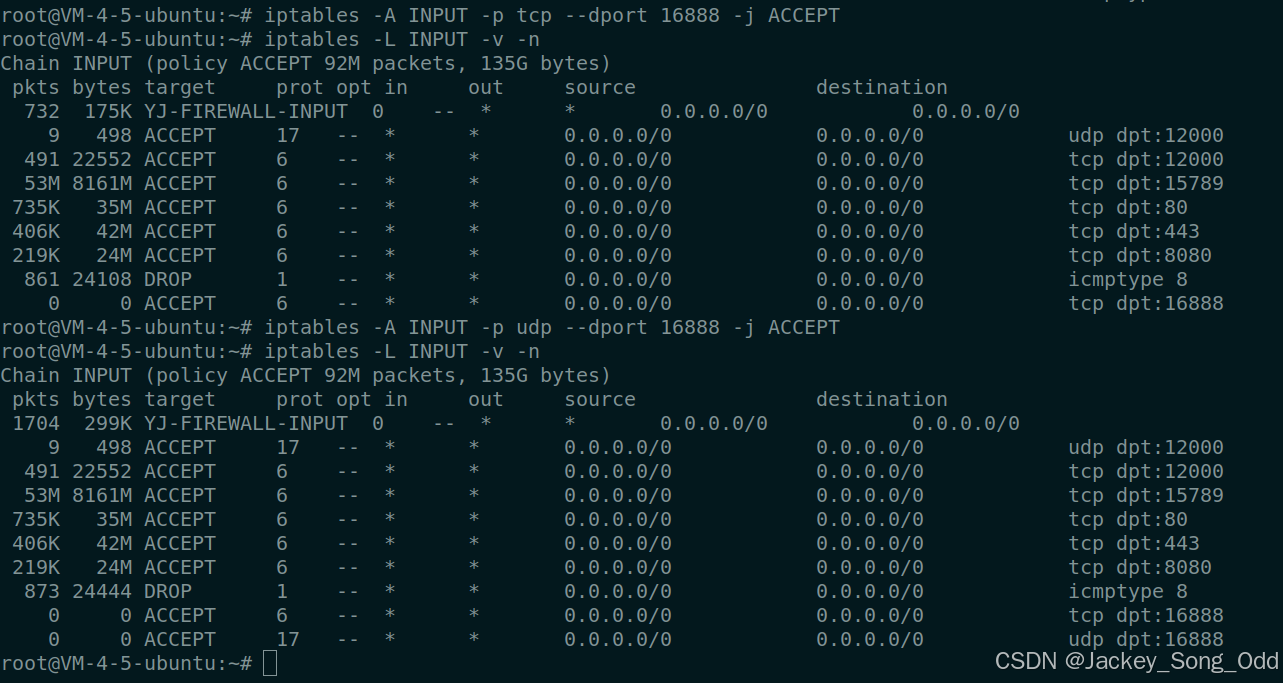
ufw 简介
Uncomplicated Firewall ( UFW ) 是一款用于管理netfilter 防火墙的程序,设计为易于使用。它使用由少量简单命令组成的命令行界面,并使用iptables进行配置。自 8.04 LTS 以来,所有Ubuntu安装中都默认提供 UFW 。自 10 以来, 所有Debian安装中都默认提供 UFW 。
ufw 建立在 iptables 之上的。从前面的 iptables 配置防火墙规则来看,iptables 的使用很繁琐,因为 iptables 是一个非常底层也比较老的一个工具。ufw 就是为了简化 iptables 而出现的。
安装 ufw,sudo apt-get install ufw。
启用 / 禁用 ufw
sudo ufw enablesudo ufw disable
设置默认入站策略为拒绝:
1 | bash复制代码 |
设置默认出站策略为允许:
1 | bash复制代码 |
允许特定端口
1 | bash复制代码 |
例如,允许SSH端口(默认22):
1 | bash复制代码 |
或者允许特定端口号(如8080):
1 | bash复制代码 |
拒绝特定端口:
1 | bash复制代码 |
例如,拒绝HTTP端口(默认80):
1 | bash复制代码 |
或者拒绝特定端口号(如12345):
1 | bash复制代码 |
允许或拒绝特定服务:
ufw也允许你使用服务名来管理规则。例如,允许HTTP服务:
1 | bash复制代码 |
拒绝HTTPS服务:
1 | bash复制代码 |
允许或拒绝特定IP地址
允许来自特定IP地址的连接:
1 | bash复制代码 |
例如,允许来自192.168.1.100的连接:
1 | bash复制代码 |
拒绝来自特定IP地址的连接:
1 | bash复制代码 |
例如,拒绝来自192.168.1.100的连接:
1 | bash复制代码 |
查看UFW状态和规则
查看UFW状态:
1 | bash复制代码 |
此命令将显示UFW的当前状态(启用或禁用)以及已配置的规则概览。
查看详细状态:
1 | bash复制代码 |
此命令将显示所有打开和拒绝的端口、正在运行的服务以及详细的规则信息。
删除规则
通过规则号删除:
首先,使用sudo ufw status numbered命令查看带有编号的规则列表。然后,使用以下命令删除特定编号的规则:
1 | bash复制代码 |
通过规则内容删除:
可以直接通过规则内容(如端口号或服务名)来删除规则。例如,删除允许SSH连接的规则:
1 | bash复制代码 |
或者删除允许特定端口(如8080)的规则:
1 | bash复制代码 |
重置UFW
重置ufw将删除所有规则并禁用防火墙:
1 | bash复制代码 |
日志记录
ufw还支持日志记录功能,可以跟踪防火墙的活动。
启用日志记录:
1 | bash复制代码 |
设置日志级别:
日志级别可以是off、low、medium、high或full。例如,将日志级别设置为medium:
1 | bash复制代码 |
禁用日志记录:
1 | bash复制代码 |



